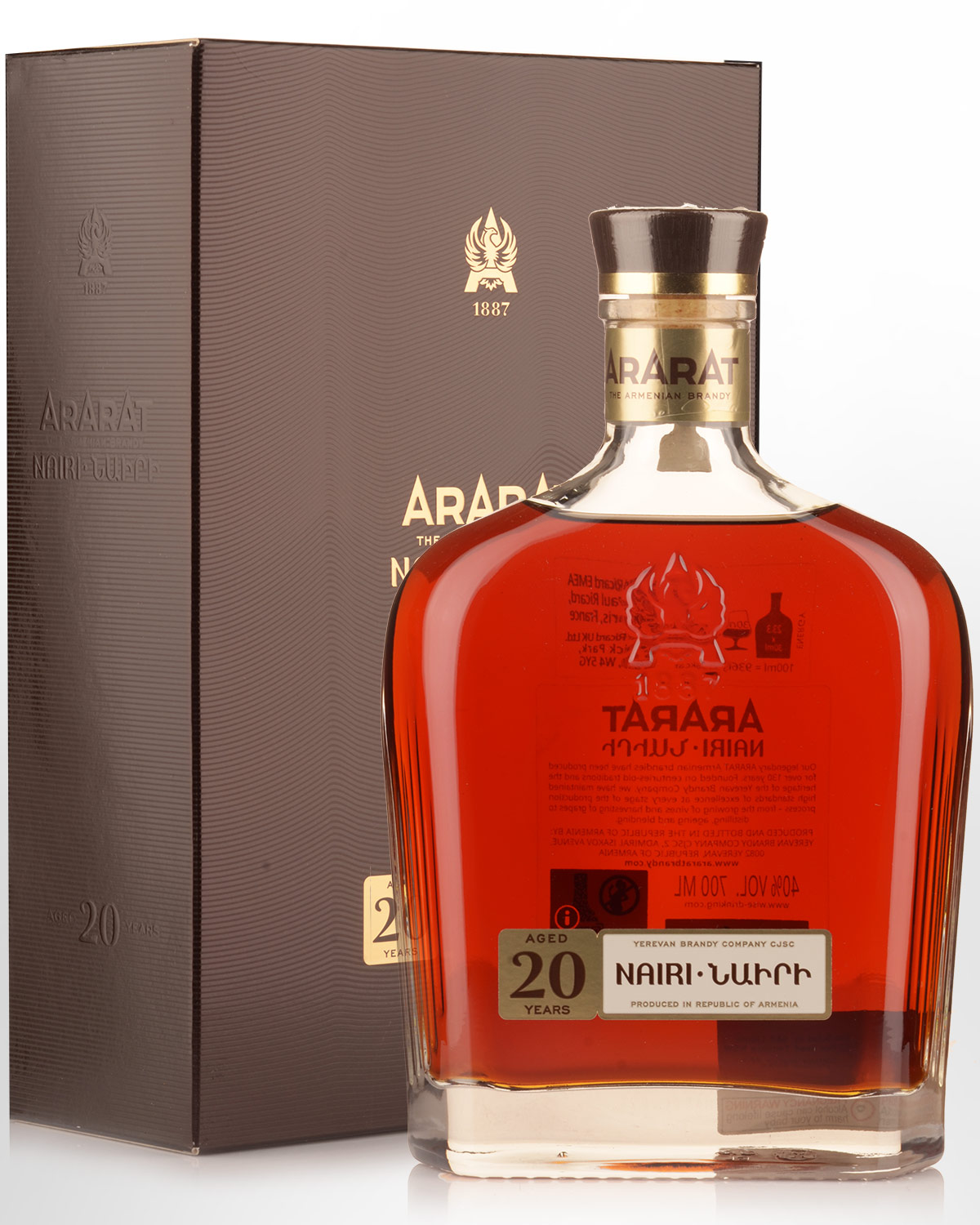
Ararat Nairi 20 Year Old Brandy (700ml)
Copper colour with pale gold hue. At first reminiscent of a good Cognac, yielding aromas of dried fruits, spice and vanillan oak. Very warming palate entry, with a full, ripe body. Gently prickling spirit, with spicy plum pudding / raisin flavours, taking an unexpected turn from the nose. Excellent balance. This could easily be mistaken for XO Australian brandy. Different, certainly, but a spirit that would make for an exotic alternative to XO Cognac. 41.5% Alc./Vol.
Other reviews... Deep amber copper color. Elegant, well integrated aromas of wood spice, butter roasted nuts, and dried autumn and berry fruits follow through on a supple, slightly tannic entry to a dry-yet-fruity medium body with pencil shavings, almond butter, and pepper notes. Finishes with a lingering dry, lingering mineral, cedar, and spice fade. Great use of oak with a pure, resonant and fruity brandy core that is reminiscent of fine Spanish brandy.
International Review of Spirits Award: Gold Medal 90 points (Exceptional) - tastings.com
to most of Australia
